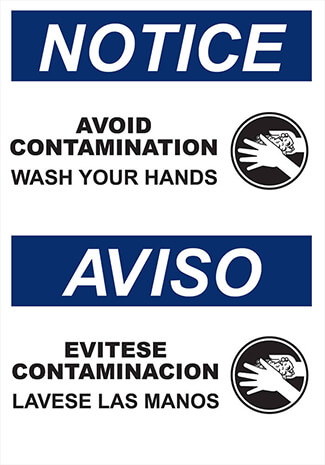Workplace Safety During the Coronavirus Pandemic
03
February,
2023
2 MINUTE READ

With the recent pandemic, many companies have scrutinized their cleanliness and been surprised to find weak points. Even with simple tasks such as handwashing, there is often room for improvement. While news outlets and blogs provide a flood of information, there are simple tips workplaces can use to step up sanitation easily.
Agencies Aim to Slow Spread
Various government and specialty agencies are offering their official recommendations for employers to help slow the spread. On March 9, 2020, the Occupational Safety and Health Administration (OSHA) set "Guidance on Preparing Workplaces for COVID-19." To help protect workers from coronavirus, the guidance divides employers into four risk categories and recommends engineering controls, administrative controls, and personal protective equipment.
"Protecting the health and safety of America's workforce is a key component of this Administration's comprehensive approach to combating the coronavirus," said Principal Deputy Assistant Secretary for Occupational Safety and Health Loren Sweatt. "This guidance outlines practical ways that employers and workers can address potential health risks from the coronavirus in their workplaces."
The Center for Disease Control and Prevention along with the Environmental Protection Agency are helping educate the public on the differences between cleaning, disinfecting, and sanitizing methods in the workplace.
Cleaning: Removes germs and dirt from surfaces, typically through soap and water. This method lowers germ numbers but doesn't usually kill or destroy them. Cleaning surfaces is a first step, prior to disinfection.
Disinfecting: Kills surface germs through disinfectant chemicals, which do not necessarily clean visibly dirty surfaces or remove germs. To properly disinfect, products often need to remain on a surface for 3 to 5 minutes.
Sanitizing: Kills germs, but not as effectively as disinfecting. While some products can be used to do both, disinfecting generally requires more time and work. Sanitizing is often easier to accomplish, and still contributes to reducing the risk of infection.
Reinforce Virus Control Safety
With the rapid spread of novel coronavirus (COVID-19), many workplaces have been stepping up their sanitation programs. For example, some workplaces put in place dozens of new, portable handwashing stations with cleanliness reminder signs. Such stations are also available outside the entry of these workplaces so that customers, workers, and visitors can wash before entering.
Cleanroom manufacturing has been a growing trend in the past few years. These facilities must hold to very strict standards to prevent contamination. Conventional workplaces can follow cleanroom manufacturing's lead by providing clear organization to help sustain the working environment. To help keep up integrity in sanitization and disinfection:
- Ensure workers correctly maintain their personal protective equipment. Organize PPE areas and mark them for their use, along with the supplies for keeping equipment clean.
- Mark work area boundaries and include communication for dressing areas, shoe cover/sticky floor surface boundaries, corridors, etc. Clearly define aisles for walking or locations for equipment and materials. Use social distancing signs to keep workers at least 6 feet apart.
- Use arrows and other floor markings to designate pedestrian traffic and to signal the locations of washing stations and other emergency/medical kit stations.
When workplaces keep operations clean, tidy, and healthy for workers, the chances for disruption in production and efficiency are minimized. It also helps stem the spread of diseases. Start by creating or updating a facility management program to include best practice tips, safety procedure reminders, and more, and make sure to keep your workers up-to-date and trained.
Follow workplace communication compliance, learn how to make compliant signs, and utilize best practices for worker health and safety with this free OSHA Safety Signs guide.
RELATED RESOURCES

Demand Rises in Cleanroom Manufacturing
Industry momentum is embracing the benefits of manufacturing in cleanroom environments to ensure product ...
Read
OSHA Announces Walking-Working Surfaces Rule
OSHA pushed through updated standards for walking-working surfaces in late 2016. A walking-working surface is ...
Read
Workplace Injuries: The Common, the Costly
Some of the most common injuries cost employers more than $59 billion a year. We cover the top types of ...
Read.png)



